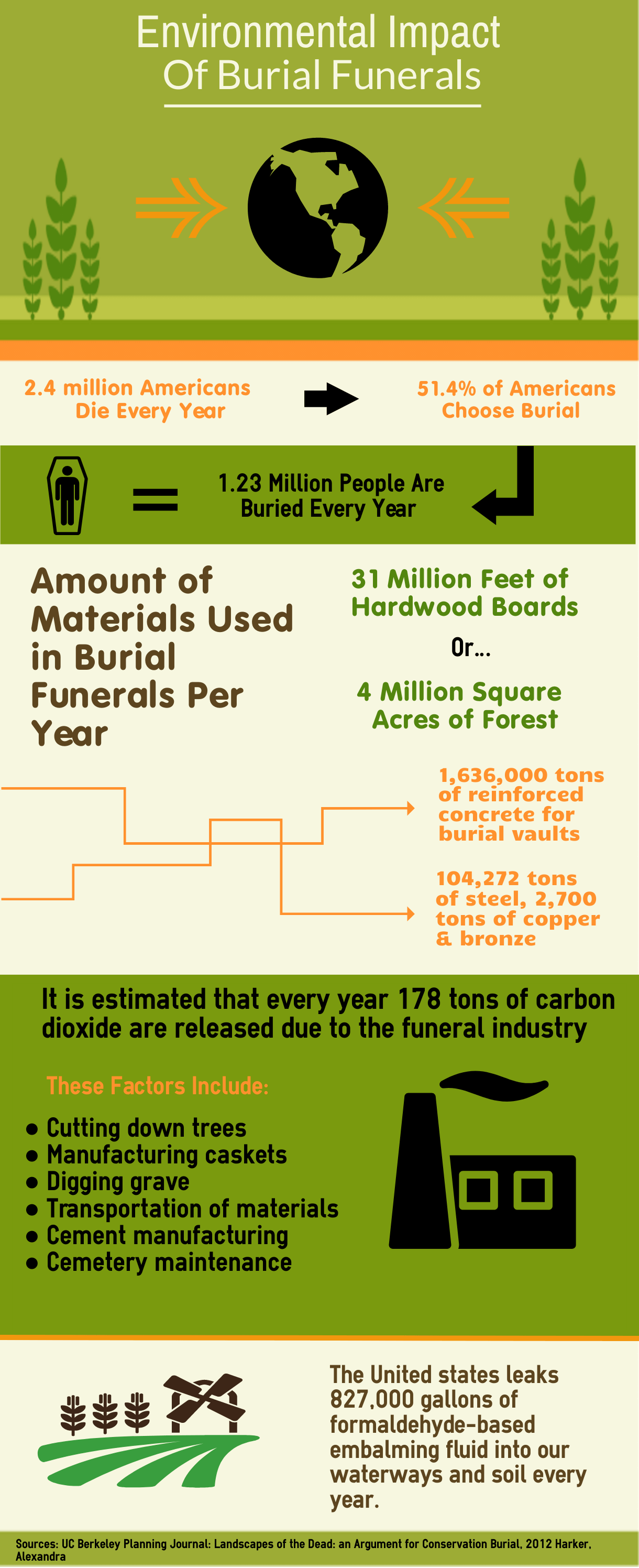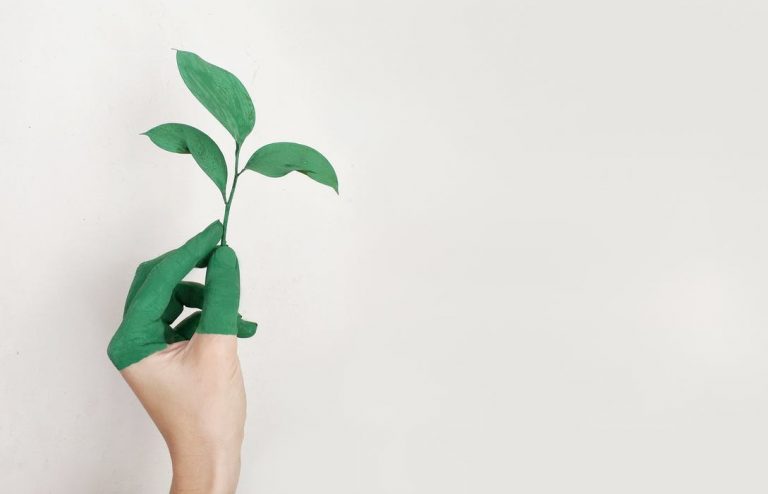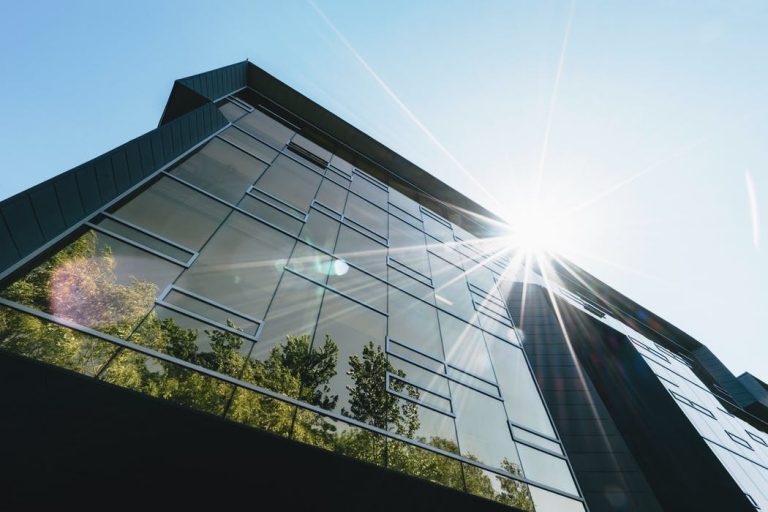The funeral industry is undergoing a rapid transformation nationwide. More and more funeral homes and memorial companies are using environmentally friendly products to reduce unnecessary waste. The average funeral goer does not get a true sense of the entire environmental impact the funeral industry is responsible for. To understand the full extent of this pollution and source of carbon emissions, view this infographic.

Consumers are starting to become aware of some of these effects as more light is shed on the problem. Funeral homes across the nation have taken notice and are beginning to offer families more environmentally sustainable ways of memorializing a loved one.
1.The Rising Trend of Cremation Funerals
According to the National Funeral Directors Association, in 2005 the rate of people choosing cremation was at 32.3%. In 2016 the rate of cremation was 48.5% and the rate is expected to climb to 71.1% by 2030. This rise in cremation funerals over burial funerals is not only fueled by the lower cost of cremation funerals, the environmental impact of cremation is also substantially less than a burial funeral. As evidenced from the infographic above, burial funerals require much more resources and energy to gather the materials, manufacture the casket, and transport it. In fact, burial funerals would not be possible without a hearse, which is a specially made vehicle that is long enough to adequately transport a casket. Compared to small cremation urns that require less material to manufacturer and less energy to transport, it becomes clear why cremation funerals are more environmentally friendly.
2.Biodegradable Caskets and Urns
Caskets have traditionally been made from polished wood that has a stained finish. Cremation urns are most commonly crafted from brass or bronze metal. Both these materials require significant energy and materials to create. When the casket is buried it will slowly degrade. All the chemicals used to polish and stain the wood do not simply disappear. Instead, they slowly make their way into the water table. The Groundwater Foundation illustrates how these pollutants contaminate ground water reserves. The United States is dependent on groundwater for over 50% of its water needs, so it should come as no surprise that burying formaldehyde preserved bodies and wood that is stained with petroleum-based polishes are not good for preserving usable underground water reserves.
- Creative Environmental Initiatives
Some cemeteries such as the Penn Forest Natural Burial Park give families the opportunity to plant a memorial tree in their own forest when they bury a loved one at the cemetery. Safe Passage Urns in partnership with the One Tree Planted Organization is dedicated to planting a tree for every single cremation urn sold. This promise to plant a memorial tree for every urn sold exists to give families a way to contribute back to the planet during end-of-life transitions. This environmental initiative, similar to Penn Forest Natural Burial Park, are both great at promoting sustainable funeral practices that help offset carbon emissions.
To give a better look into the potential positive effect this can have on our planet we should look at this initiative on a global level. Every single year 55.3 million people die worldwide. If we assume that every person who dies has a tree planted in their honor, this is 55.3 million trees! This is the equivalent to 76,170 acres of forest. What is even more incredible is that as the trees age, they are able to absorb more carbon in the atmosphere. According to the Ecology Department at Cornell University, a 30-year-old oak tree forest is able to sequester 18,000 pounds of carbon dioxide per acre, however, a 50-year-old forest is able to sequester 30,000 pounds of carbon dioxide per acre.
The burden of protecting the environment is not the sole responsibility of governments or businesses. The burden lies on the shoulders of every single individual. By using environmentally sustainable practices in how we memorialize a loved one, we are ensuring a more pristine and vibrant planet for our children to inherit. The trees that we plant now will provide shade for all future generations to come.





Leave a Comment